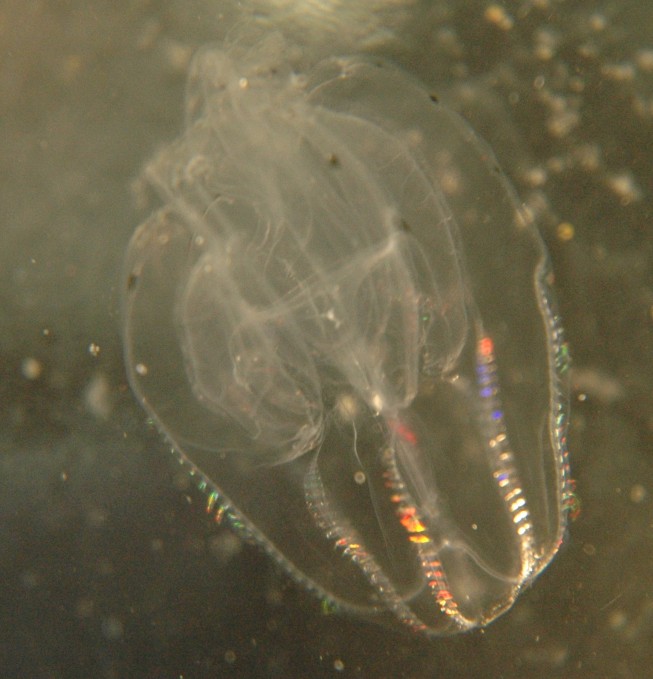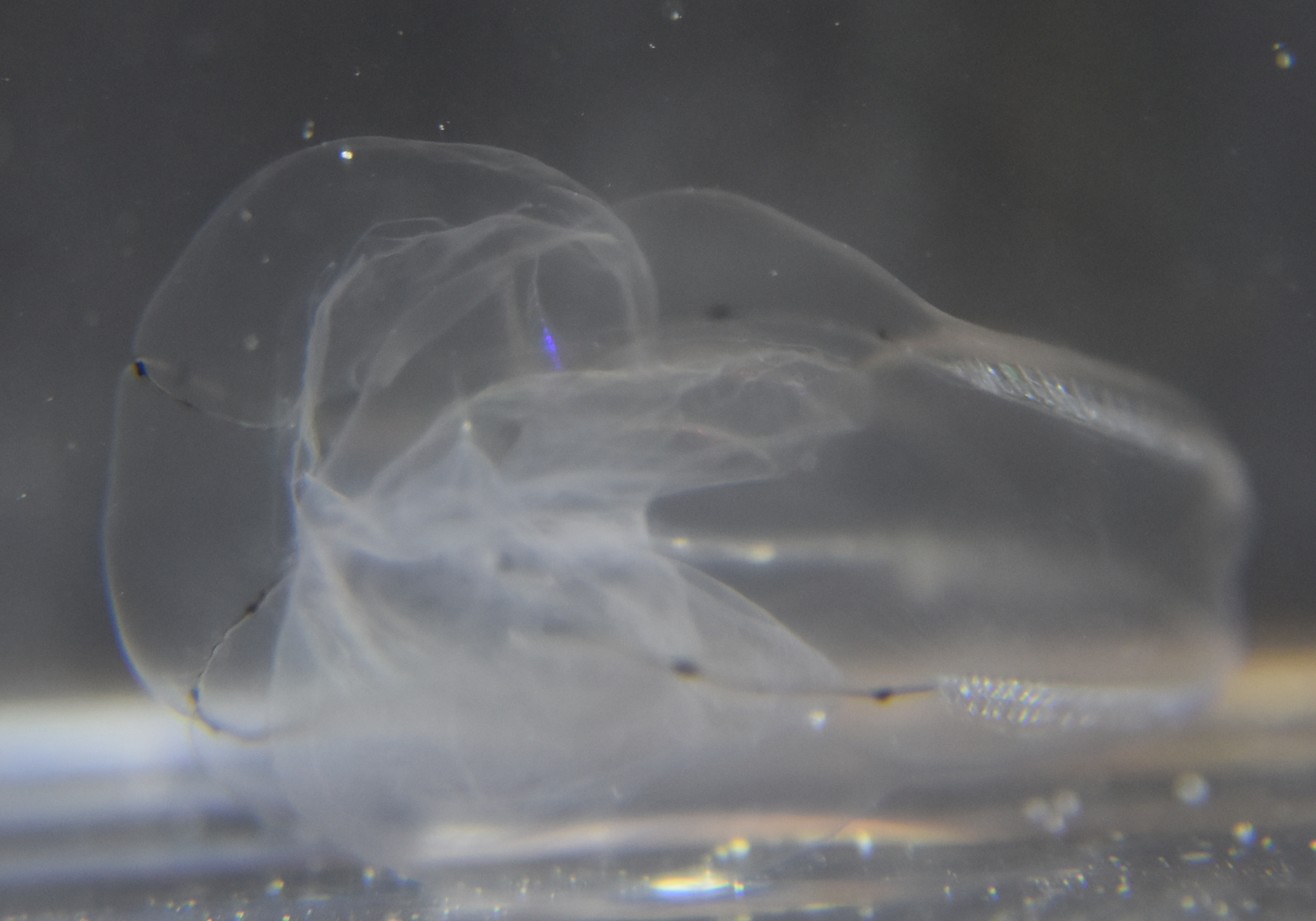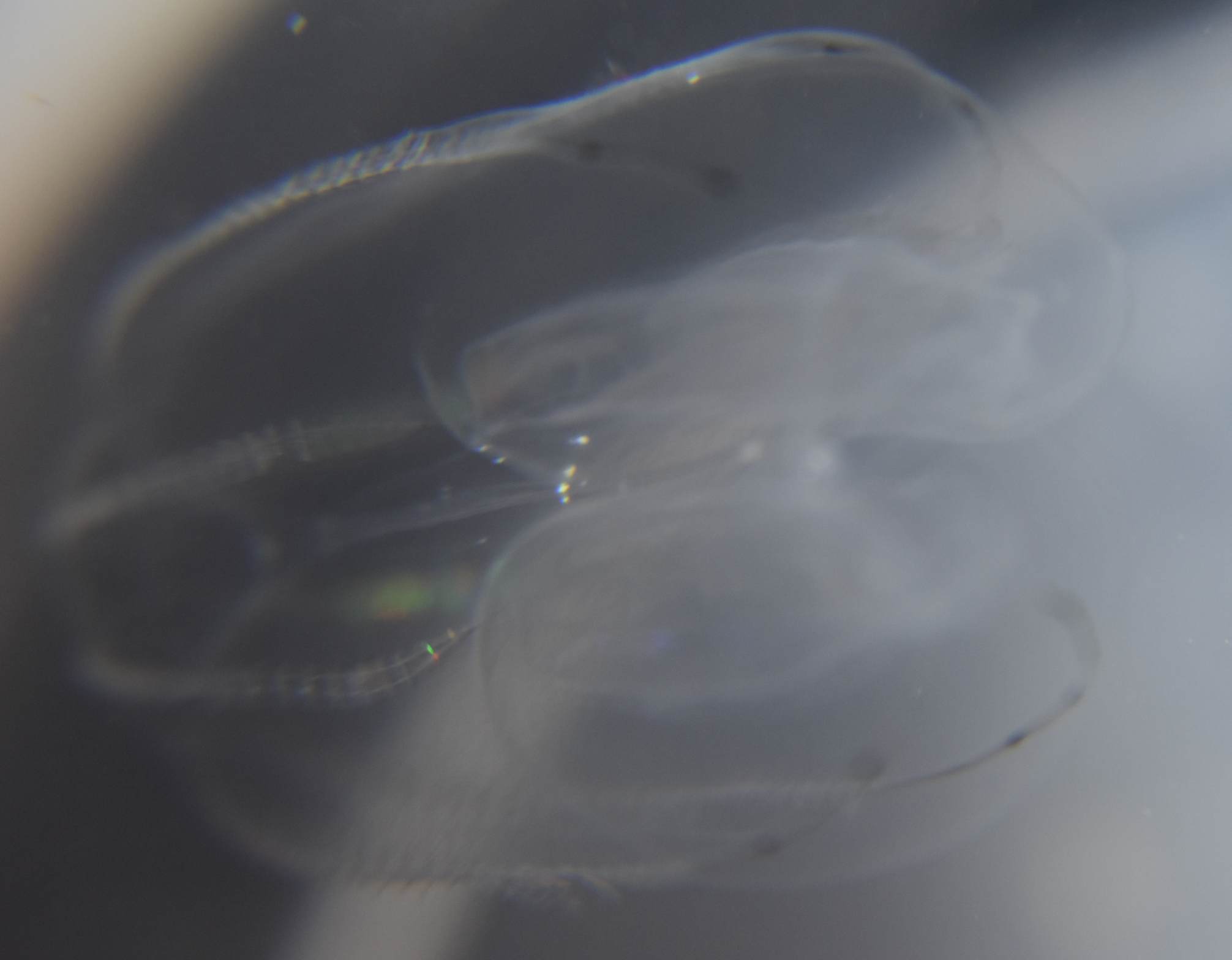How to Distinguish from Similar Species: This is one of the few lobate ctenophores in our waters. Several similar species are highly flattened, but this species is not flattened. Others may be able to clap their lobes together in a "frog kick" for escape swimming, but this species cannot.
Geographical Range: Atlantic temperate to arctic, Pacific southern CA to Arctic, Arctic oceans. This is the most common lobate ctenophore along our Pacific coast.
Depth Range: Surface to 1000 m (largest individuals live deeper)
Habitat: Pelagic
Biology/Natural
History:
This species mostly cruises vertically, upward or downward.
One of
the individuals we captured had recently swallowed a copepod.
May
be eaten by Beroe
ctenophores.
This ctenophore is luminescent.
| Return to: | |||
| Main Page | Alphabetic Index | Systematic Index | Glossary |
References:
Dichotomous Keys:Carlton, 2007
Flora and Fairbanks, 1966 (as B. microptera)
Kozloff, 1987, 1996
General References:
Johnson
and Snook, 1955 (as B. microptera)
Kozloff,
1993
Lamb
and Hanby, 2005
Smith
and Johnson, 1996
Scientific Articles:
Web sites:
General Notes and
Observations: Locations,
abundances, unusual behaviors:

In this view the dark spots which are in rows along the lobes in line with the ctene rows can be clearly seen.
Authors and Editors of Page:
Dave Cowles (2009): Created original page
CSS coding for page developed by Jonathan Cowles (2007)



